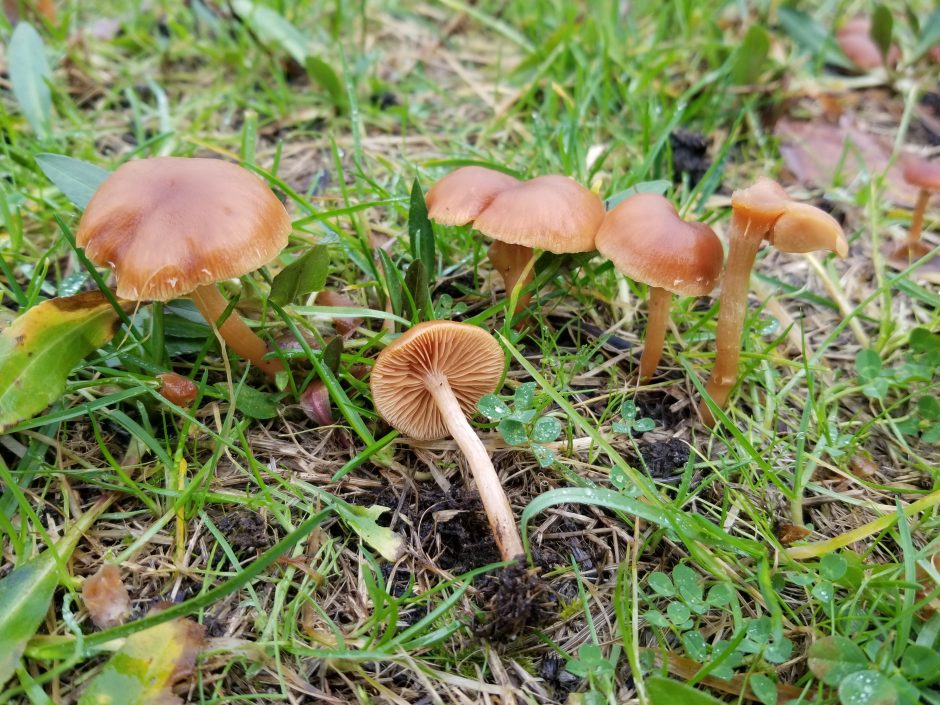Scurfy Twiglet (Tubaria furfuracea)

Photos by Emma Harrower
If you have been walking in the Beaty Biodiversity Museum’s courtyard lately, you may have noticed little brown mushrooms growing on the lawn. Linda Jennings (UBC Herbarium Collections Curator of Vascular Plants and Algae) had never seen these mushrooms before in her 13 years of working at the museum!
As the ‘Mycologist in Residence’ at the UBC Herbarium, I, Dr. Emma Harrower, jumped at the chance to identify this mushroom. I got down on my hands and knees to take pictures and photographed the cap, the stem, and the gills (paper-like structures under the cap).

Pictures of the cap (left), stem (middle) and gills (right) – photos by Emma Harrower
I smelled the mushroom and it smelled mild. I noticed that the younger mushrooms were a deep reddish-brown with white patches or flecks on the edges of the margin but older individuals were buff-coloured.

Young, middle-aged, and old Scurfy Twiglets – photo by Emma Harrower
I identified the mushroom as the Scurfy Twiglet (Tubaria furfuracea). ‘Furfuracea’ means “scaly” in Latin, perhaps as a way of describing the white flecks around the margin. I collected a specimen that will be the UBC Herbarium’s most recent collection of fungi. As noted in the Royal BC Museum Handbook Mushrooms of British Columbia by Andy MacKinnon and Kem Luther (2021), Scurfy Twiglets are sometimes abundant on wood-chip landscaping. They can also be found on nutrient-dense material. In the BBM courtyard, I found these mushrooms growing out of good black soil that looked nutrient-rich.
The Scurfy Twiglet has been found everywhere except places that are too hot, like the Sahara, or too cold, like Antarctica. It has been recorded in countries where people have the time and interest to look at innocuous little brown mushrooms.
When identifying mushrooms, a variety of information can be useful for differentiating among species, including colour, smell, and habitat. Two species that superficially resemble the Scurfy Twiglet are the Ochre Aldercap (Alnicola escharioides, also known as Naucoria escharioides) and the Funeral Bell (Galerina marginata). According to MacKinnon and Luther (2021), the Ochre Aldercap resembles the Scurfy Twiglet, but it has a slightly bitter taste and grows with alders, whereas the Funeral Bell (Galerina marginata) lacks white flecks on the cap. It has a dark brown base, and it usually grows on wood.
Now that you have seen a picture of the Scurfy Twiglet with its white flecks on the margin of the cap and know how it differs from two similar-looking species, you too can identify a little brown mushroom. Let’s see if it will be back next year.

Young (left) and old (right) patches of the Scurfy Twiglet – photos by Emma Harrower
